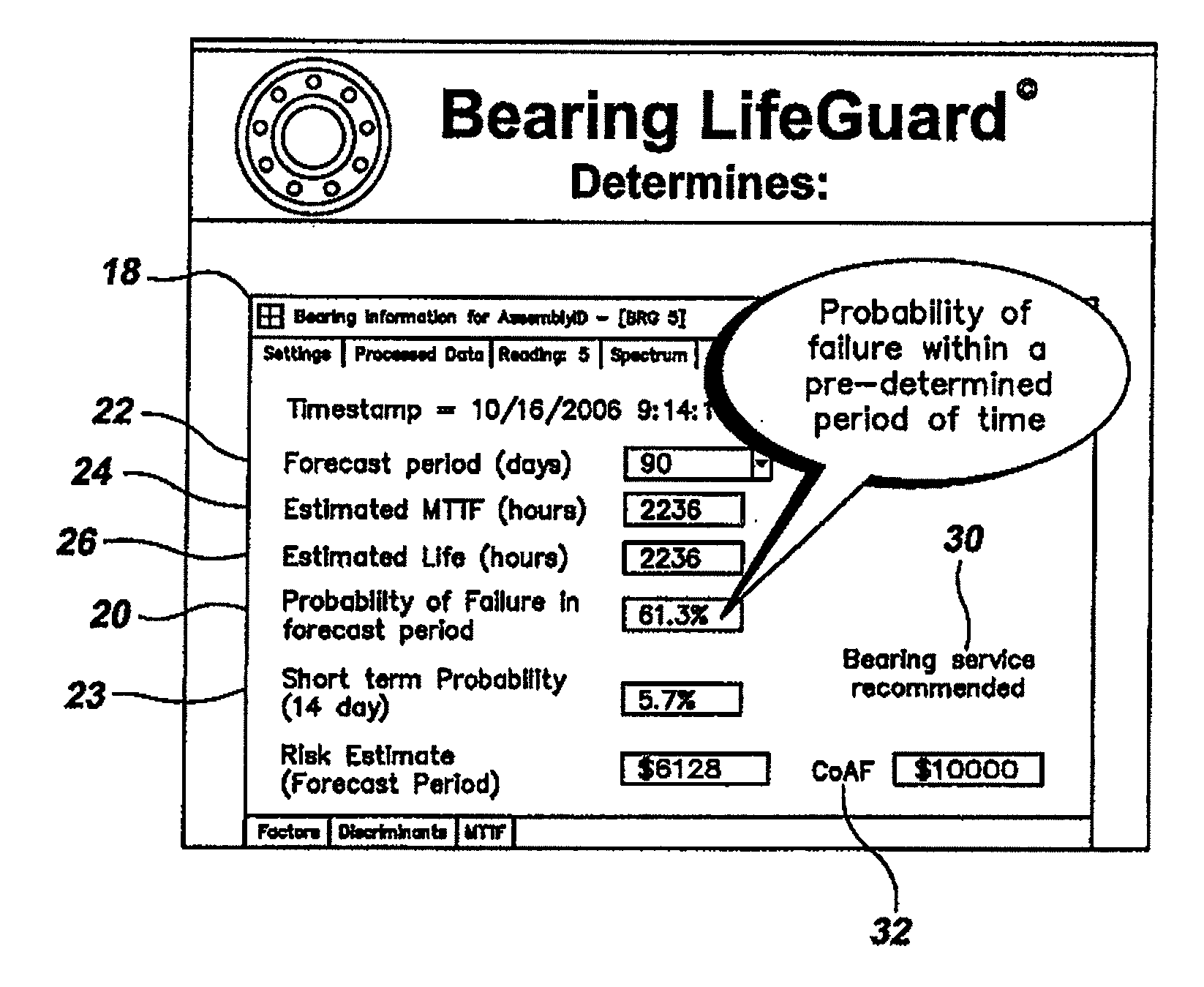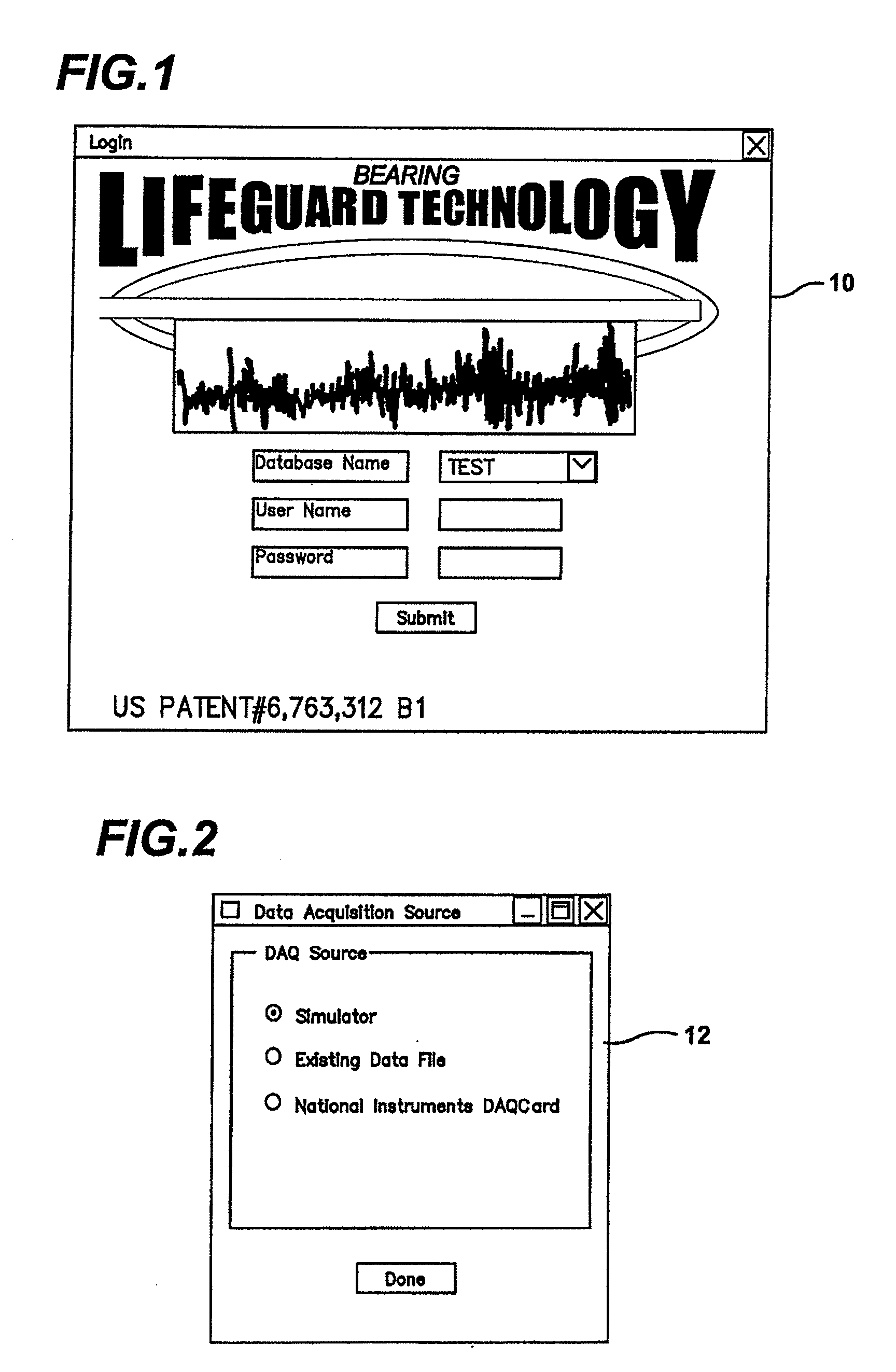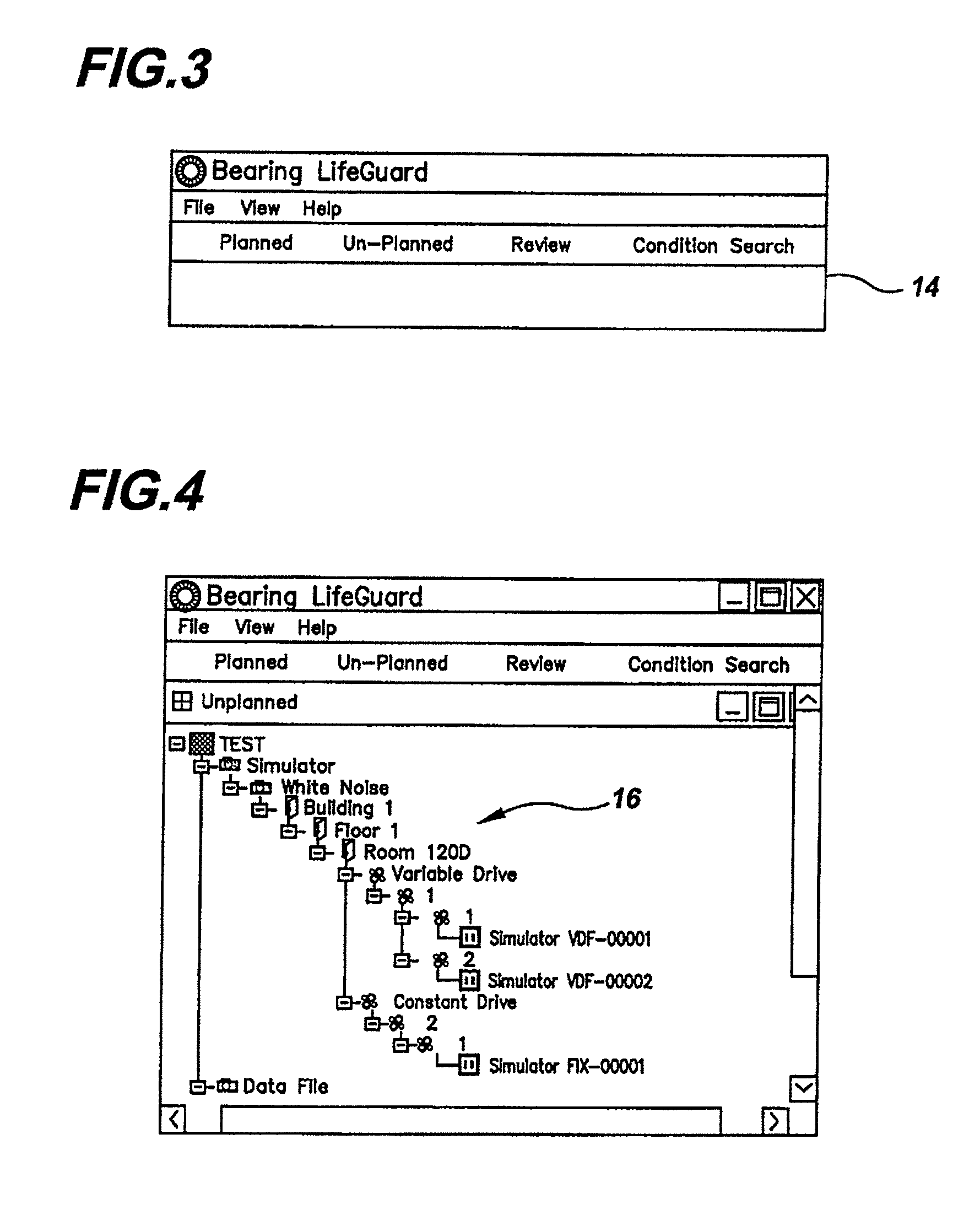Rotating bearing analysis and monitoring system
a technology of rotating bearings and monitoring systems, applied in liquid/fluent solid measurement, instruments, machines/engines, etc., can solve the problems of affecting the widespread commercial use of the system, and affecting the quality of the system
- Summary
- Abstract
- Description
- Claims
- Application Information
AI Technical Summary
Benefits of technology
Problems solved by technology
Method used
Image
Examples
Embodiment Construction
[0051]The present invention is directed to a system for obtaining and presenting information on rolling element bearing condition. Vibration data is obtained from one or more bearings, which may be distributed throughout a production facility on multiple machines. The vibration data for each bearing is stored and analyzed to determine a degraded condition factor BD for the bearing from the vibration data.
[0052]The degraded condition factor BD is preferably calculated using discriminant analysis. It most preferably ranges from a minimum when the discriminant analysis indicates a substantially new bearing and a maximum when the bearing is degraded to a point close to failure. Preferably, at least one of the following discriminants is used to calculate BD: a low frequency energy LF discriminant, a high frequency energy HF discriminant, a crest factor CF discriminant, a kurtosis K discriminant, an envelope demodulation ED discriminant and a peak acceleration P discriminant.
[0053]It is a...
PUM
 Login to View More
Login to View More Abstract
Description
Claims
Application Information
 Login to View More
Login to View More - R&D
- Intellectual Property
- Life Sciences
- Materials
- Tech Scout
- Unparalleled Data Quality
- Higher Quality Content
- 60% Fewer Hallucinations
Browse by: Latest US Patents, China's latest patents, Technical Efficacy Thesaurus, Application Domain, Technology Topic, Popular Technical Reports.
© 2025 PatSnap. All rights reserved.Legal|Privacy policy|Modern Slavery Act Transparency Statement|Sitemap|About US| Contact US: help@patsnap.com



